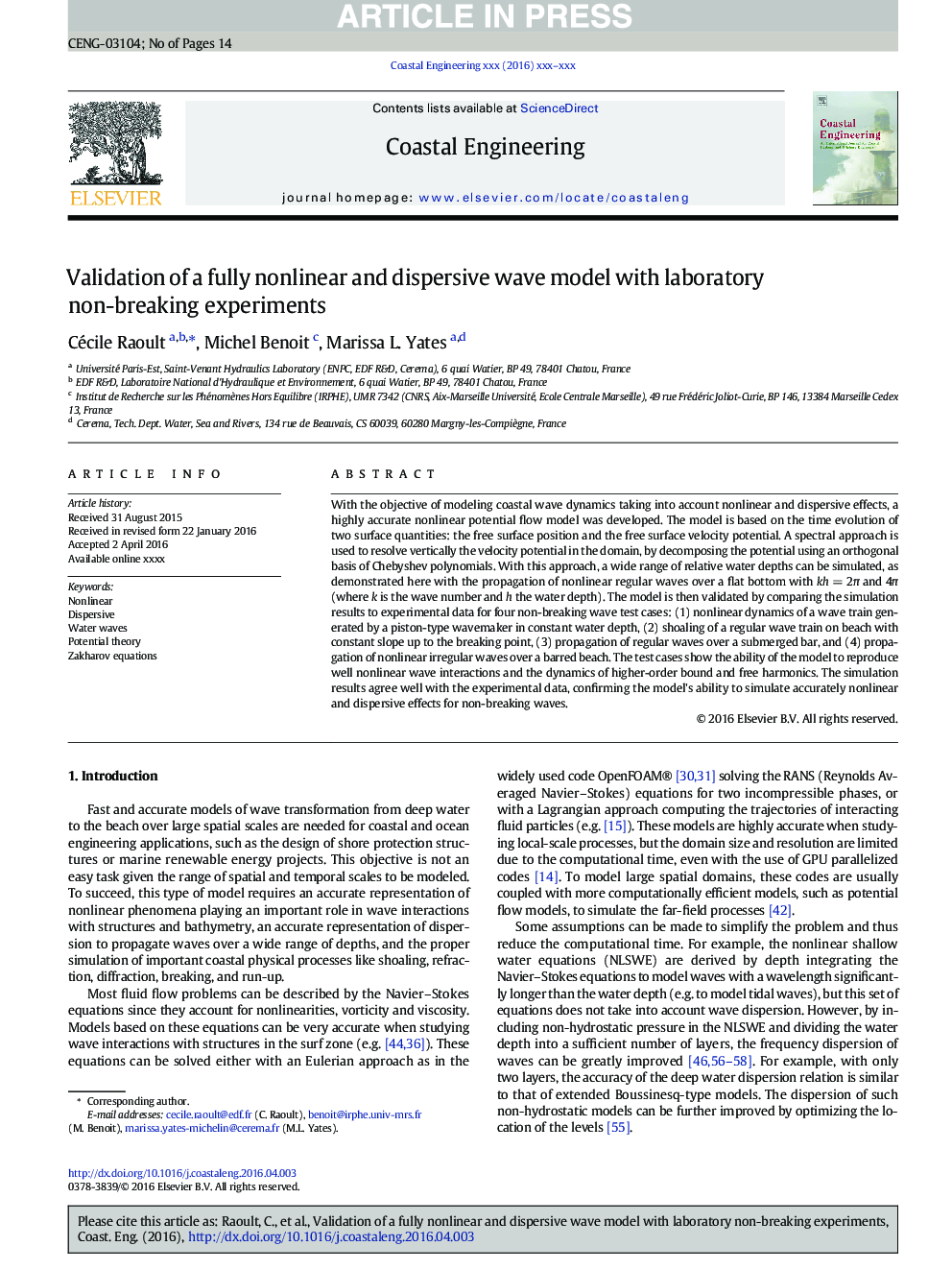| Article ID | Journal | Published Year | Pages | File Type |
|---|---|---|---|---|
| 8059712 | Coastal Engineering | 2016 | 14 Pages |
Abstract
With the objective of modeling coastal wave dynamics taking into account nonlinear and dispersive effects, a highly accurate nonlinear potential flow model was developed. The model is based on the time evolution of two surface quantities: the free surface position and the free surface velocity potential. A spectral approach is used to resolve vertically the velocity potential in the domain, by decomposing the potential using an orthogonal basis of Chebyshev polynomials. With this approach, a wide range of relative water depths can be simulated, as demonstrated here with the propagation of nonlinear regular waves over a flat bottom with kh = 2Ï and 4Ï (where k is the wave number and h the water depth). The model is then validated by comparing the simulation results to experimental data for four non-breaking wave test cases: (1) nonlinear dynamics of a wave train generated by a piston-type wavemaker in constant water depth, (2) shoaling of a regular wave train on beach with constant slope up to the breaking point, (3) propagation of regular waves over a submerged bar, and (4) propagation of nonlinear irregular waves over a barred beach. The test cases show the ability of the model to reproduce well nonlinear wave interactions and the dynamics of higher-order bound and free harmonics. The simulation results agree well with the experimental data, confirming the model's ability to simulate accurately nonlinear and dispersive effects for non-breaking waves.
Related Topics
Physical Sciences and Engineering
Engineering
Ocean Engineering
Authors
Cécile Raoult, Michel Benoit, Marissa L. Yates,
